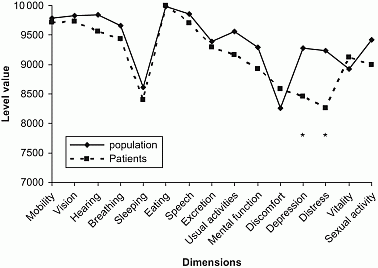ESPE2014 Free Communications Puberty (6 abstracts)
Quality of Life in Patients with Congenital Hypogonadotropic Hypogonadism
Tero Varimo a , Matti Hero a , Eeva-Maria Laitinen a , Harri Sintonen c & Taneli Raivio a,
aChildren’s Hospital, Helsinki University Central Hospital, Helsinki, Finland; bInstitute of Biomedicine/Physiology, University of Helsinki, Helsinki, Finland; cDepartment of Public Health, University of Helsinki, Helsinki, Finland
Background: Little is known about the burden of disease, as evaluated by health related quality of life (HRQoL), in patients with congenital hypogonadotropic hypogonadism (CHH). We characterized the (HRQoL) in a relatively large and well-characterized population of patients with CHH using the 15D, a comprehensive preference-based generic instrument in sampling dimensions for the construct of HRQoL. 15D covers most of the ‘domains of health’ emphasized in the WHO International Classification of Functioning, Disability and Health (ICF).
Objective and Hypotheses: To evaluate the HRQoL in CHH.
Method: We investigated the HRQoL in 40 subjects (31 men and 9 women) with CHH using the Finnish 15D instrument. The mean age in men was 38.1 (range 16–61) and in women 32.7 (16–45) years. Kallmann syndrome was diagnosed in 30 (75%) and normosmic CHH in 10 (25%) patients. The results of CHH patients were compared with those of age- and sex-matched general population. P<0.01 was considered statistically significant.
Results: CHH patients had significantly lower scores in the depression and distress domains as compared to general population controls (Fig. 1).
Conclusion: As compared with general Finnish population, CHH is associated with decrements in depression and distress dimensions of HRQoL. Our findings support the inclusion of screening for depression in the medical follow-up of patients with CHH. Longitudinal studies of HRQoL in CHH are needed for confirming our finding, and for evaluating whether factors such as poor adherence to hormone replacement therapy or problems with transition to adult services increase the risk of poor HRQoL.

Figure 1 15D dimension scores in CHH patients and age- and sexmatched population controls. The scale ranges from 0 to 1. The smaller the level value, the more severe problems. The difference of 0.03 is considered clinically significant. *(P<0.01).




